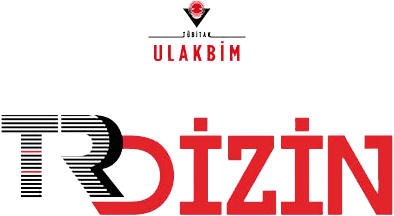
Bu eser Creative Commons Alıntı-GayriTicari-Türetilemez 4.0 Uluslararası Lisansı ile lisanslanmıştır.













The Effects of tDCS on Depression and Anxiety Disorders Induced by Sub-Chronic Stress
Güven AKÇAY1, Narin DERİN21Department Of Biophysics, Hitit University, Çorum, Turkey2Department Of Biophysics, Akdeniz University, Antalya, Turkey
INTRODUCTION: Stress causes neuropsychiatric diseases such as depression and anxiety in the person by affecting emotions, opinions and behaviors. In this study, the aim was to investigate the therapeutic effects of tDCS on depression and anxiety disorders that occur after sub-chronic stress.
METHODS: 40 male Wistar rats weighing 290-310 g were divided into four groups as control, tDCS, stress and stress+tDCS. Restraint stress was applied for 7 days (2 h/day) as a stress model. Rats in the tDCS and stress+tDCS groups were performed the stimulation of 1 mA anodal tDCS for three consecutive days from the 5th day of stress exposure. On the 7th day of the experiment, the anxiety and depression behaviors of the rats were evaluated with the open field test and the elevated plus maze test.
RESULTS: No significant changes were found in the locomotor activity, elevated plus maze test data between control and tDAS groups. In the stress group rats compared to the control group, there was a significant decrease in the locomotor activity levels (p <0.001), while a significant increase was observed in the data indicator of anxiety (p<0.001). In the stress + tDAS group compared to the control group, there was a significant decrease in the data indicator of anxiety following tDAS application (p <0.05), but no significant difference was found in the results of locomotor activity.
DISCUSSION AND CONCLUSION: In conclusion, our data showed that tDCS stimulation may have an effect on sub-chronic stress-induced anxiety and depression behaviors.
Sub-Kronik Stresin Neden Olduğu Depresyon ve Anksiyete Bozukluklarında tDAS’ın Etkileri
Güven AKÇAY1, Narin DERİN21Hitit Üniversitesi Tıp Fakültesi, Biyofizik Ana Bilim Dalı, Çorum2Akdeniz Üniversitesi Tıp Fakültesi, Biyofizik Ana Bilim Dalı, Antalya
GİRİŞ ve AMAÇ: Stres duygu, düşünce ve davranışları etkileyerek kişide depresyon, anksiyete gibi nöropsikiyatrik hastalıklara sebep olmaktadır. Bu çalışmada sub-kronik stres sonrası oluşan depresyon ve anksiyete bozukluklarına tDAS’ın terapötik etkilerinin incelenmesi amaçlanmıştır.
YÖNTEM ve GEREÇLER: 290-310 g ağırlığındaki 40 adet erkek Wistar sıçanlar kontrol, tDAS, stres ve stres+tDAS olmak üzere 4 gruba ayrılmıştır. Stres modeli olarak 7 gün boyunca günde 2 saat hareketsizlik stresi uygulanmıştır. tDAS ve stres+tDAS grubundaki sıçanlara stres maruziyetinin 5. gününden itibaren 3 gün boyunca 1 mA anodal tDAS uyarımı yapılmıştır. Deneyin 7. gününde sıçanların anksiyete ve depresyon davranışları açık alan testi ve yükseltilmiş artı labirent testi ile değerlendirilmiştir.
BULGULAR: Kontrol ve tDAS grupları arasında lokomotor aktivite, yükseltilmiş artı labirent testi verilerinde anlamlı değişim bulunmamıştır. Kontrol grubuna göre stres grubu sıçanların lokomotor aktivite düzeylerinde anlamlı azalma görülürken (p<0.001), yükseltilmiş artı labirent testinde anksiyete göstergesi olan verilerde ise anlamlı artış saptanmıştır (p<0.001). Kontrol grubuna göre stres+tDAS grubunda, tDAS uygulamasını takiben anksiyete göstergesi olan verilerde ise anlamlı azalış görülmüş (p<0.05) ancak lokomotor aktivite sonuçlarında anlamlı farka rastlanmamıştır.
TARTIŞMA ve SONUÇ: Sonuç olarak verilerimiz, tDAS uyarımının sub-kronik stres kaynaklı anksiyete ve depresyon eğilimini azaltıcı etkilerinin olabileceğini ortaya koymuştur.
Manuscript Language: Turkish
(905 downloaded)


